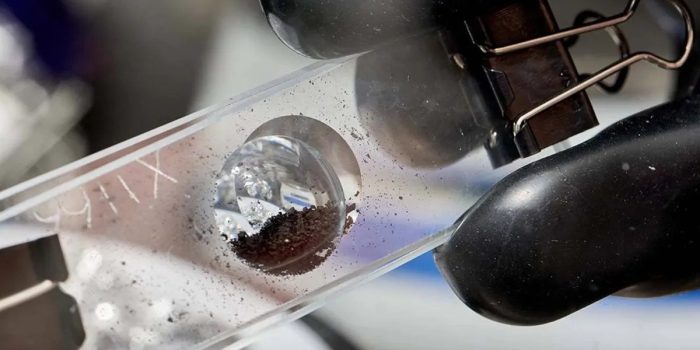NASA has delivered pristine samples of asteroid Bennu’s soil to researchers at the Natural History Museum in London, marking a significant step in the study of the 500m-wide space rock located approximately 200 million miles from Earth. This asteroid, believed to have formed from primordial material during the early stages of the solar system’s creation 4.56 billion years ago, is considered a time capsule that could provide crucial insights into the origins of Earth and life.
Ashley King, a meteorite researcher at the NHM, expressed excitement about being among the first to study the Bennu samples. The goal is to unravel the ancient secrets preserved within the rocky extraterrestrial grains, each sample weighing roughly 100 mg. Bennu’s unique status as a pristine relic from the solar system’s dawn makes it a valuable resource for understanding the building blocks of Earth.
The interest in Bennu extends beyond its historical significance. Scientists are drawn to it as the “most dangerous” asteroid in the solar system, posing a potential threat to Earth within the next 300 years, although the likelihood of collision is slim.
To explore the samples, the NHM researchers plan a series of experiments, with a focus on assessing the asteroid’s organic content, including carbon-bearing molecules. This investigation aims to determine whether asteroids like Bennu played a role in delivering essential building blocks of life to Earth.
Various techniques will be employed for in-depth analysis, including using electron microscopes to examine granules’ structure on a micron scale and directing X-rays at ground portions of the asteroid to deduce its mineralogy by observing the bending of waves interacting with the grain’s surface.

Initial analyses by NASA revealed significant amounts of carbon and water in portions of the asteroid, with some carbon linked to organic compounds. Another critical investigation involves measuring hydrogen isotopes in Bennu’s water to determine if they match the composition found in Earth’s oceans.
The samples arrived after NASA’s Osiris-Rex spacecraft collected them from Bennu’s surface in 2020, delivering a substantial 60 grams of soil, the most significant amount retrieved from space since the Apollo program. Scientists involved in the OSIRIS-REx mission, including Sara Russell, expressed their excitement about finally having the samples back after years of anticipation. The quantity of samples is expected to keep scientists busy for decades as they uncover the mysteries held within the tiny fragments of Bennu.


